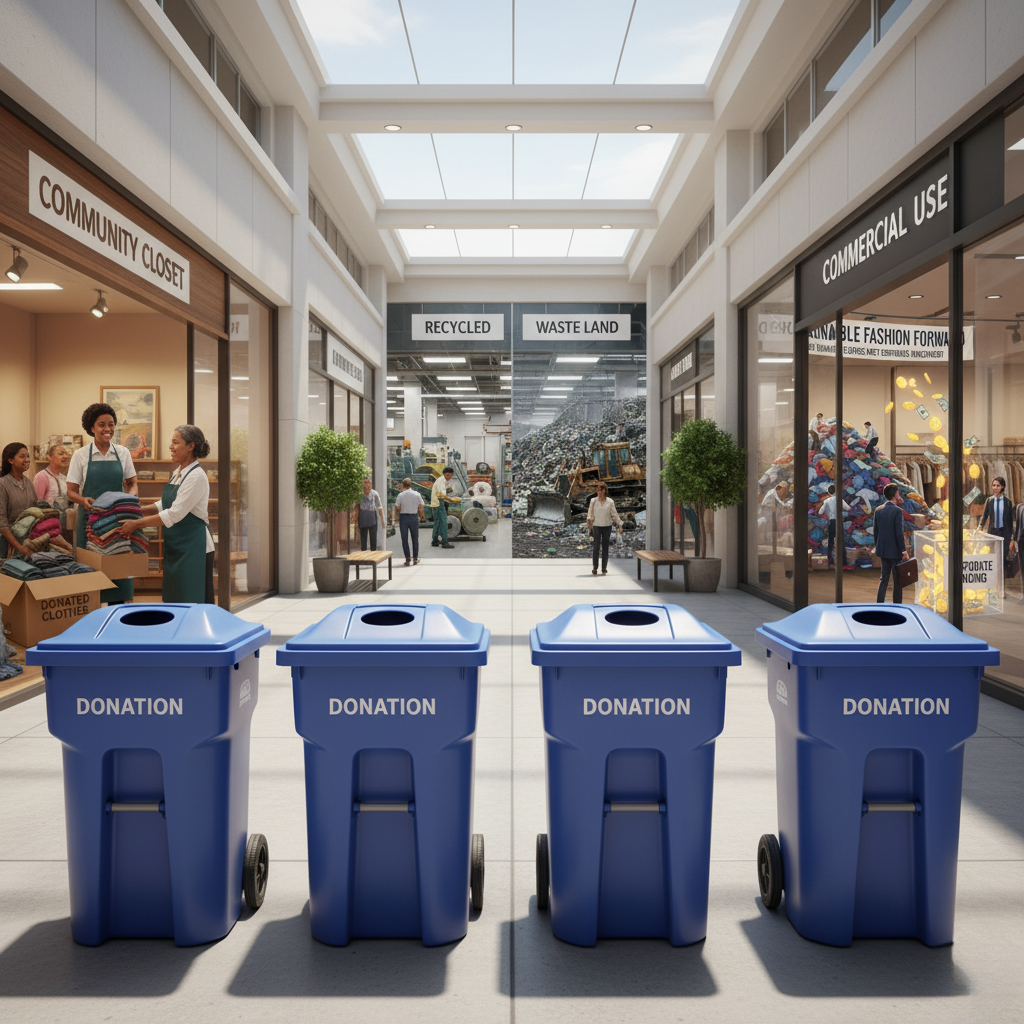Clothing donations are often seen as a local act of charity. In practice, they move through an international system that combines charity work, commercial trade, and recycling. What looks like a small gesture connects to a global network worth billions of dollars.
Studies show 67 percent of donors believe their clothing stays local. In reality, only about 15 percent remains in domestic shops. The rest is exported, recycled, or sold through international markets.
From Collection Bin to Worldwide Trade
The United States exports more than one billion dollars in used clothing each year. The European Union exports 1.4 million tons. Canada, Australia, and Asian economies also contribute to this trade. Sorting facilities in places like New Jersey, Germany, and Japan decide whether clothing is resold locally, recycled into new products, or shipped abroad.
This system provides affordable clothing in Africa, South America, and parts of Asia, and creates jobs in resale and tailoring. Japan and South Korea lead in advanced textile recycling. The downside is that lower-quality exports can overwhelm local waste systems and undermine domestic textile industries.
Local Impact vs Global Redistribution
Only a small share of donations stays within the country of origin. Charities such as Goodwill, Salvation Army, Caritas, and Vinnies operate resale shops, but the majority of items are moved on for international use. While this raises concerns about transparency, it also extends the life of clothing that would otherwise become waste.
Identifying Legitimate Donation Points
Fraudulent collection bins are a global problem. Donors should check that organizations are registered and provide clear contact details. In North America, Europe, and Australia, databases exist to verify charities. Choosing established operators ensures donations support real social or environmental goals.
How Policy Is Changing Donations
Regulation is beginning to reshape the system:
- Europe: From September 2025, the EU requires brands to fund collection and recycling through Extended Producer Responsibility (EPR). Digital Product Passports will soon track garments throughout their life cycle.
- United States: California has introduced the first state-level textile EPR law, with other states preparing similar measures.
- Canada and Australia: National stewardship schemes are being tested.
- Asia: Japan and South Korea are expanding textile recycling technologies, while China and Southeast Asia remain hubs for sorting and redistribution.
These rules are designed to bring more accountability, but enforcement will determine whether they succeed.
Examples of Systems That Work
France’s Refashion program processes hundreds of thousands of tons each year and funds recycling innovation. The Netherlands achieves high reuse and recycling rates through producer-funded infrastructure. In the United States, programs such as Madewell’s denim take-back and The North Face’s Clothes The Loop show how brand-led initiatives can reduce textile waste, though they remain small compared to total volumes. Brazil’s textile cooperatives, Kenya’s markets, and Japan’s recycling plants show how different regions adapt global flows to local needs.
The Challenge of Global Exports
Exporting clothing brings both benefits and risks. It creates jobs and affordable clothing access, but it can also shift waste problems to countries with weaker infrastructure. The outcome depends on the quality of items, the reliability of local markets, and the oversight of trade practices.
How to Donate Responsibly
Donors can improve outcomes by following a few basic rules:
- Give clean and good-quality items.
- Check the legitimacy of collection bins and organizations.
- Support local shelters, community centers, or refugee programs where donations stay local.
- Reduce consumption and buy longer-lasting clothing to lower waste at the source.
- What Comes Next
Donation systems are becoming more global, more regulated, and more transparent. The EU and United States are setting new standards, Asia is advancing recycling technology, and Africa and South America continue to absorb large volumes of second-hand goods.
The system is improving, but textile waste is still growing. Stronger regulation, better enforcement, and more informed consumer choices will decide whether clothing donation becomes part of a circular economy or continues as a patchwork of exports and under-regulated trade.
Clothes do not disappear once they leave your closet. They move through a worldwide system that shows how society manages resources, trade, and responsibility.





